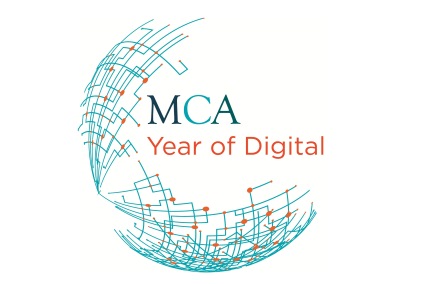Every revolution provokes a counterrevolution. So it is with Digital, as our exciting but unpredictable concluding MCA Year of Digital event on Digitising the Banks revealed. What was billed as a discussion of banks’ Digital reinvention ended up being, at least in part, a defence of traditional virtues and models: understanding the customer and a physical community presence.
|
Panelists Ewen Fleming: Grant Thornton Partner & Practice Leader, Financial Services Group Chris Brindley: Metro Bank, Managing Director – Regional Banking Darrell King: CSC Associate Partner Eric Leenders: British Banking Association Executive Director of Retail Paul Connolly: MCA Think Tank Director (Chair) |
Chris Brindley of Metro Bank suggested banks needed to acquire a real understanding of customers’ needs. It’s not difficult to see where he’s coming from. A conservative industry, high street banks thrived for years on a simple reality. People needed somewhere to put their money, an institution to manage payments to them and by them. But since the financial crisis, banks’ reputations have suffered. Digital has revolutionised people’s expectations of service access and immediacy. And it has also seen the rise of alternatives to banks, certainly on the payments side, such as PayPal.
Yet Chris’s answer to this is more bricks than clicks. Metro Bank want to reinvent the high street bank as a genuine community asset. They hold open days, outreach programmes, school visits and host fun and games in their branches – or ‘stores’ as they call them. Startlingly, when polled, the audience backed Chris’s assertion that high-street banking is not finished, by 4 to 1.
I wonder. Metro Bank are to be commended for confronting and reinventing complacent models of provision. Yet as Chris spoke, I was reminded of the Bailey Building and Loan, the Bedford Falls mutual society in Frank Capra’s film It’s a Wonderful Life. Chris argued that customers want to deal with someone they know. Now while I like the idea of having my money managed by James Stewart’s saintly George Bailey, in reality I prefer handling my own affairs. Call centre staff who understand my finances less acutely than I do are irritating. But local people who know them intimately aren’t what I want either.
And I’m not alone. Notions of community are changing, especially among young people, who may consider Twitter or their Facebook friends more vivid communities than their immediate geography. Today’s school children are more adept on the iPad than their parents, learn through gamification, and may get pocket money through an app. Will they want to make mortgage applications, open current accounts, or do anything with money, in person on physical premises?
The management consultants on the platform were unconvinced. While both Ewen Fleming of Grant Thornton and Darrell King of CSC applauded Metro Bank’s brio, they suggested that the current model of high street banks leaves them with 5-10 years at best, if they don’t reshape their approach to integrating Digital into their operations more effectively. Ewen even called into question the continuing relevance of the current account. As such, they echoed some of the comments at a recent event on Digital and skills. There, one contributor said consultants have a duty to point out to banking clients that the spectacular disintermediation that overtook the music industry could happen to them.
For some, the story of Digital and the banks is one of lateness, slow uptake, missed opportunity and the need to move quickly to catch up. Compared with, say, retail, banking is behind the curve. Two thirds of our audience said their bank’s digitisation is sub-optimal.
Eric Leenders of the BBA suggested this stemmed in part from the priority challenges banks faced after 2008 – regulatory compliance, rebuilding balance sheets, managing down liabilities. Some banks still face PPI pay outs that restrict their capacity to focus on Digital and invest. Ewen Fleming highlighted the additional complication of legacy systems. Banks were an early adopter, post-Big Bang, of business technology, especially on the payments and investments side. Not everything has gone well – see sub-prime lending. And accretions of system layers, through M&A or new products, have produced overlaps and complications in customer records. It is challenging to rip all this out while simultaneously being digitally agile and meeting consumers’ ease-of-access expectations.
Of course, as Eric Leenders observed, Digital is about more than customers. It can be used to simplify processes and reduce cost. This is not just about payment speeds, which Eric suggested had reached their practical optimum. Cyber security, cross-border syndication of access to capital, and AML measures all need Digital underpinning. Investment banks under threat from portfolio management apps and seeing their margins squeezed need Digital to reduce operational and transaction costs. Eric contrasted the complexity and industrial scale needed to digitise back office functions, with ‘front-end’ apps that the agile new wave of challenger banks were bringing to market. As our Year of Digital has shown, these are very different types of digitisation, requiring different sorts of people with different skills sets.
Yet audience members, who lamented that John Lewis’s online service was far superior to their banks’, suggested that back office Digital problems could not be decoupled from front office ones. They suggested that a revolutionary new model of retail banking, what one contributor termed the next ‘First Direct moment’, would not arrive until banks developed a better culture, an improved balance of trust and risk in dealings with customers and a more open and collaborative approach to data.
These observations resonate. Setting up a small business account, even without an overdraft facility, is tortuous. Policing banks’ investment decisions is a legitimate public policy concern after 2008. But there is a case for seeing how far regulatory requirements needlessly conflict with Digital’s cultural assumptions of ease and instantaneity. Similarly, tensions between security and openness need be explored. Recently, a colleague of mine received nine letters from their bank legally confirming ten simultaneous transactions. They queried whether the tenth letter had been sent. They were advised it had and would be again for completeness. They then received another ten letters. Only for the original tenth to turn up a few weeks later. Giving them twice as many letters as transactions. Actually they didn’t need any. They just needed to know the transactions had been legally acknowledged. An open data approach would have allowed them to see immediately that ten letters had been despatched and to attribute the missing tenth to the vagaries of Royal Mail.
On data, Darrell King of CSC suggested that technologies to support much better interpretation and exploitation of customer data are out there. But it is up to banks to start using them.
This all takes us back to Chris’s point. Whether bank reinvention happens on the high street or online, or, as with retail, fluidly combines the two, a thorough understanding of what customers – current and future – want, will be critical. My hunch is that as the proportion of Digital natives among customers rises, so the appetite for financial disintermediation will intensify. Darrell suggested that responding to this will entail avoiding excessive complexity in Digital models, but also educating consumers in how to self-serve. Those who succeed and stave off the threat of ‘Google Bank’ will be those who use data for transactional and business efficiency and to provide customers value. They will form alliances with other Digital innovators outside financial services to provide a more rounded service.
Will they be on the high street? Despite finding much that was compelling in Chris’s argument, I’m not so sure.
Written by Paul Connolly, Director of MCA Think Tank, as part of the MCA Year of Digital.


